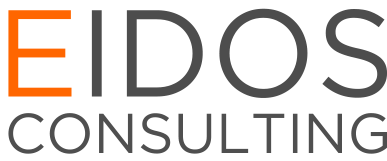Written by our very own Paul Marston, and originally published by the Chartered Institute of Housing.
There has been a lot of topics vying for the headlines over the past year, but one topic that has continued to remain at the forefront (and has been so for many years) is the increasing skills gap impacting sectors throughout the UK – the housing sector included.
This ever-growing issue has not escaped the attention of the UK government, with the Skills for Jobs whitepaper, along with other reforms to further education, providing a targeted response to future skills needs. Skills development is also referenced in the Social Housing whitepaper released following the tragedy at Grenfell, which highlights the reforms needed (and therefore the change to skills and behaviours) to the sector as a whole.
Although it is right that reform is made at a national level, this approach can often leave individual organisations in the dark as to how they can effect a positive change to workforce skills, let alone what their starting point should be. Do you truly know your skills needs and where gaps exist in current workforce skillsets? Do you know the options available to you as a business to fill existing and future skills gaps? Without answers to these questions, creating an effective solution, let alone a timely one, is challenging.
As a start, you should always define what we term your skills baseline. Let us explore how this is done, as well as how you can ensure you embed a solution that futureproofs the skills and capabilities of your workforce.
Define the skills gap
Clearly understanding the skills shortage you have will allow you to identify the best way to fill it. This can often be difficult to quantify. Your skills base needs to meet existing client & industry requirements and be aligned to your strategic objectives; are these clearly defined and understood throughout the business? You may have skills needs that are mandated by industry bodies, qualifications that you require your staff to achieve and maintain, or skills that are needed to further enable the effectiveness of your business (think social and environmental impact, or ED&I leadership). All these add up to paint a picture of where you are, versus where you need to be.
Know your current position
This is arguably the most important step, but is the most regularly overlooked. Often organisations will recruit to fill a perceived skills gap, without first fully understanding the skills that already exist within their workforce. How competent are your existing employees to deliver on the job they have? What latent skills do they possess that you could put to good use? Having a good understanding of this, as well as your organisation structure and role profiles, will provide you with the foundation upon which you can decide to upskill existing employees, or recruit new ones.
Focus on the future, as well as the present
This is about being proactive rather than reactive. What changes will affect the housing sector in the future? What will your clients be asking for in 12-18 months? What new technology might you be bringing into your business that will mean a change for your workforce? All these have an impact on the skills your organisation requires and should become a focus for the longer-term development of your workforce, and a foundation for your recruitment strategy. If your entire focus is on developing individuals for the here and now to meet existing customer demands, your organisation will find it difficult to adapt to their future skills requirements. Knowing where changes will be made in your business and industry will allow you to strategise both your recruitment and your workforce development.
Do you want to find out more about how to manage workforce capability and skills? Join Paul by booking your place at CIH’s housing management summit on Tuesday 12 October 2021 to receive practical advice on how you can understand the skills needs of your business, and how to embed strategies that will ensure your organisation maintains high workforce skills levels for the future.
